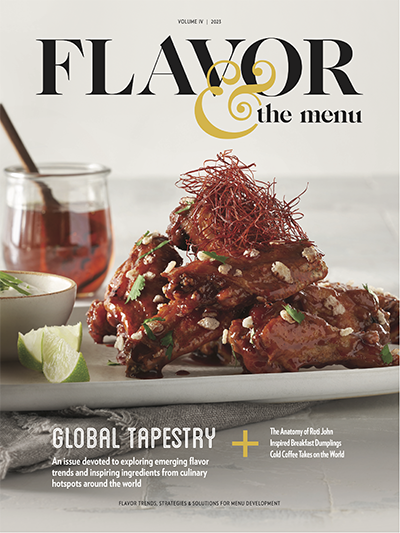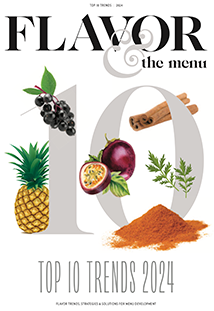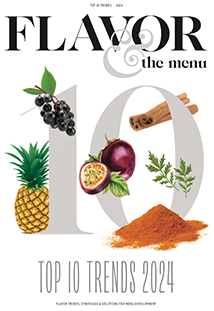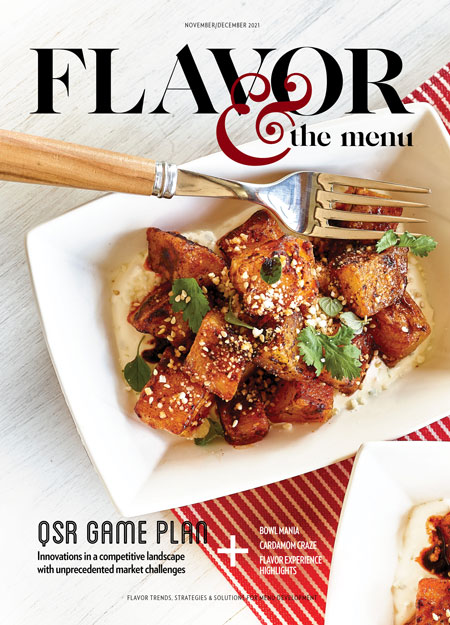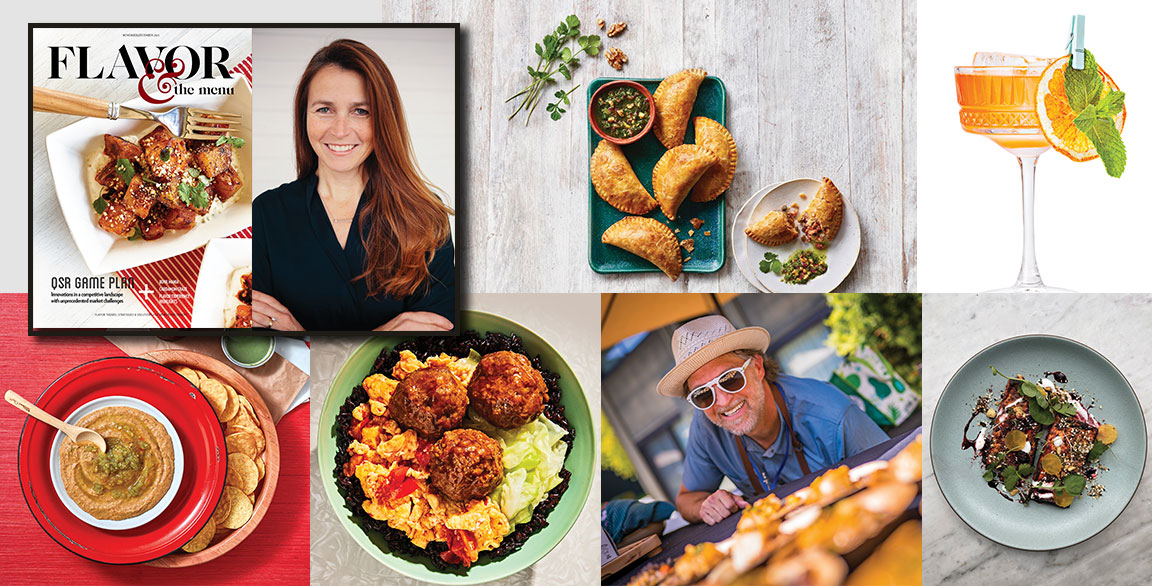

In a year with few opportunities for engaging, in-person conversations, one of the high points of the long-awaited Flavor Experience 2021 conference (see Flavor Reunion) was the think-tank roundtable sessions in which operators and suppliers came together to share insights and strategies in an open-forum discussion.
From these candid conversations came some of the most insightful learnings of the pandemic. Issues of supply chain disruptions, labor strategies, and post-pandemic customer mindsets drove much of the discussion. Aside from operational challenges, how do these factors influence menu and flavor innovation? How do restaurant menus evolve in a time of such constraints and unpredictability?
It’s clear that innovating in such challenging circumstances requires a modification in approach. Understandably, operators are hesitant to reach too far for fear of unreliable product availability or overtaxing staff, so menu development changes are being made in smaller steps within tighter boundaries. Katie Ayoub’s article on innovation (Quick Thinking) highlights the strategies at play here, using quick serve as a case study. As foodservice analyst and consultant Maeve Webster says, innovation is happening with a small “i” rather than a big “I.” Pushing flavor boundaries here is tightened, but innovation continues, even if subtly.
Another clear approach is a new simplicity of menus. While this has been a topic over the past year-plus, the area of focus has shifted during this time. Last year, the strategy was in paring down menus and lowering SKUs. Now, the focus is on simplicity of execution—being mindful of the number of steps in a menu build to help offset foodservice labor challenges.
While there are no definitive answers for dealing with the many uncertainties of the unforeseeable future, it’s clear there’s a renewed importance on relationships with all partners in the supply chain, and the ability to gain as much forecasting as possible, with as much transparency as possible. Perhaps never before have operators been so reliant on their vendor partners when it comes to innovation. These relationships are more critical than ever in helping brands evolve and maintain their momentum in flavor differentiation. In Katie’s article, this is evident in Sonic Drive-In’s relationship with its vendors. Brand Executive Chef Scott Uehlein discusses the company’s process of screening menu ideas by vendors to see who has the capacity to partner before proceeding with innovation.
These are just a couple of the front-burner topics being discussed in kitchens across the country. In the quick-service segment in particular, these issues are pressing. Over the past 18-plus months, quick serve has been the industry’s front lines, so to speak, taking the heat, and the pulse, of the entire foodservice customer base. Due to shifting consumer routines and inconsistency of full-service concepts, the pandemic has brought new customers to this segment, at all times of day. These macro adjustments have forced micro innovations in terms of both food & beverage offerings and operational executions. Given this segment serves the greatest population of consumers, it’s a fascinating one to watch during this time. And learnings coming out of how quick serve is doing will serve the entire industry.

